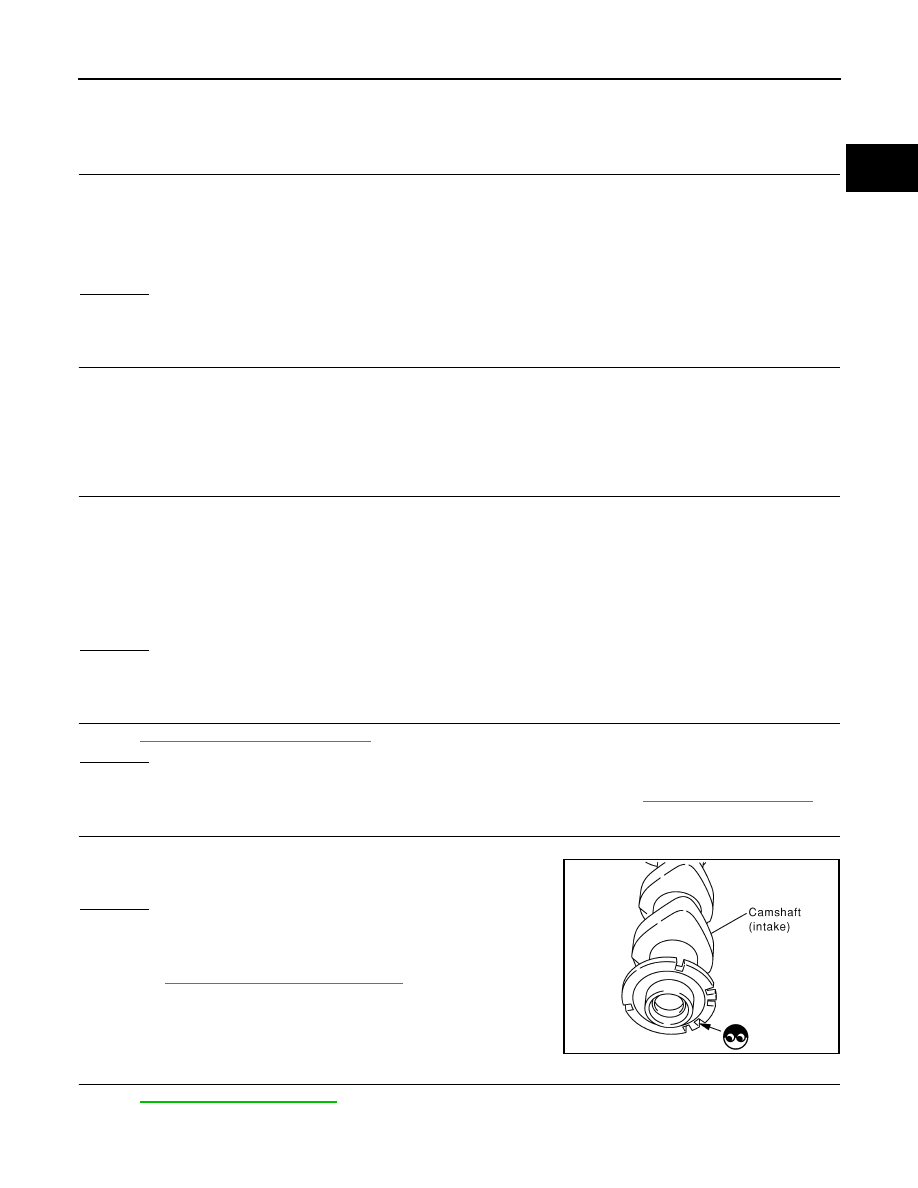Nissan Pathfinder (2012 year). Manual - part 268

P0340, P0345 CMP SENSOR (PHASE)
EC-225
< DTC/CIRCUIT DIAGNOSIS >
[VQ40DE]
C
D
E
F
G
H
I
J
K
L
M
A
EC
N
P
O
• Harness for open or short between camshaft position sensor (PHASE) and IPDM E/R
>> Repair open circuit or short to ground or short to power in harness or connectors.
5.
CHECK CMP SENSOR (PHASE) GROUND CIRCUIT FOR OPEN AND SHORT
1. Turn ignition switch OFF.
2. Check harness continuity between CMP sensor (PHASE) terminal 1 and ground.
3. Also check harness for short to power.
OK or NG
OK
>> GO TO 7.
NG
>> GO TO 6.
6.
DETECT MALFUNCTIONING PART
Check the following.
• Harness connectors F32, E2
• Harness for open or short between CMP sensor (PHASE) and ground
>> Repair open circuit or short to power in harness or connectors.
7.
CHECK CMP SENSOR (PHASE) INPUT SIGNAL CIRCUIT FOR OPEN AND SHORT
1. Disconnect ECM harness connector.
2. Check harness continuity between ECM terminal 33 (bank 1) or 14 (bank 2) and CMP sensor (PHASE)
terminal 2.
Refer to Wiring Diagram.
3. Also check harness for short to ground and short to power.
OK or NG
OK
>> GO TO 8.
NG
>> Repair open circuit or short to ground or short to power in harness or connectors.
8.
CHECK CAMSHAFT POSITION SENSOR (PHASE)
EC-226, "Component Inspection"
OK or NG
OK
>> GO TO 9.
NG
>> Replace malfunctioning camshaft position sensor (PHASE). Refer to
9.
CHECK CAMSHAFT (INTAKE)
Check the following.
• Accumulation of debris to the signal plate of camshaft rear end
• Chipping signal plate of camshaft rear end
OK or NG
OK
>> GO TO 10.
NG
>> Remove debris and clean the signal plate of camshaft
rear end or replace malfunctioning camshaft. Refer to
EM-78, "Removal and Installation"
.
10.
CHECK INTERMITTENT INCIDENT
GI-37, "Intermittent Incident"
.
Continuity should exist.
Continuity should exist.
SEC905C
August 2012
2012 Pathfinder